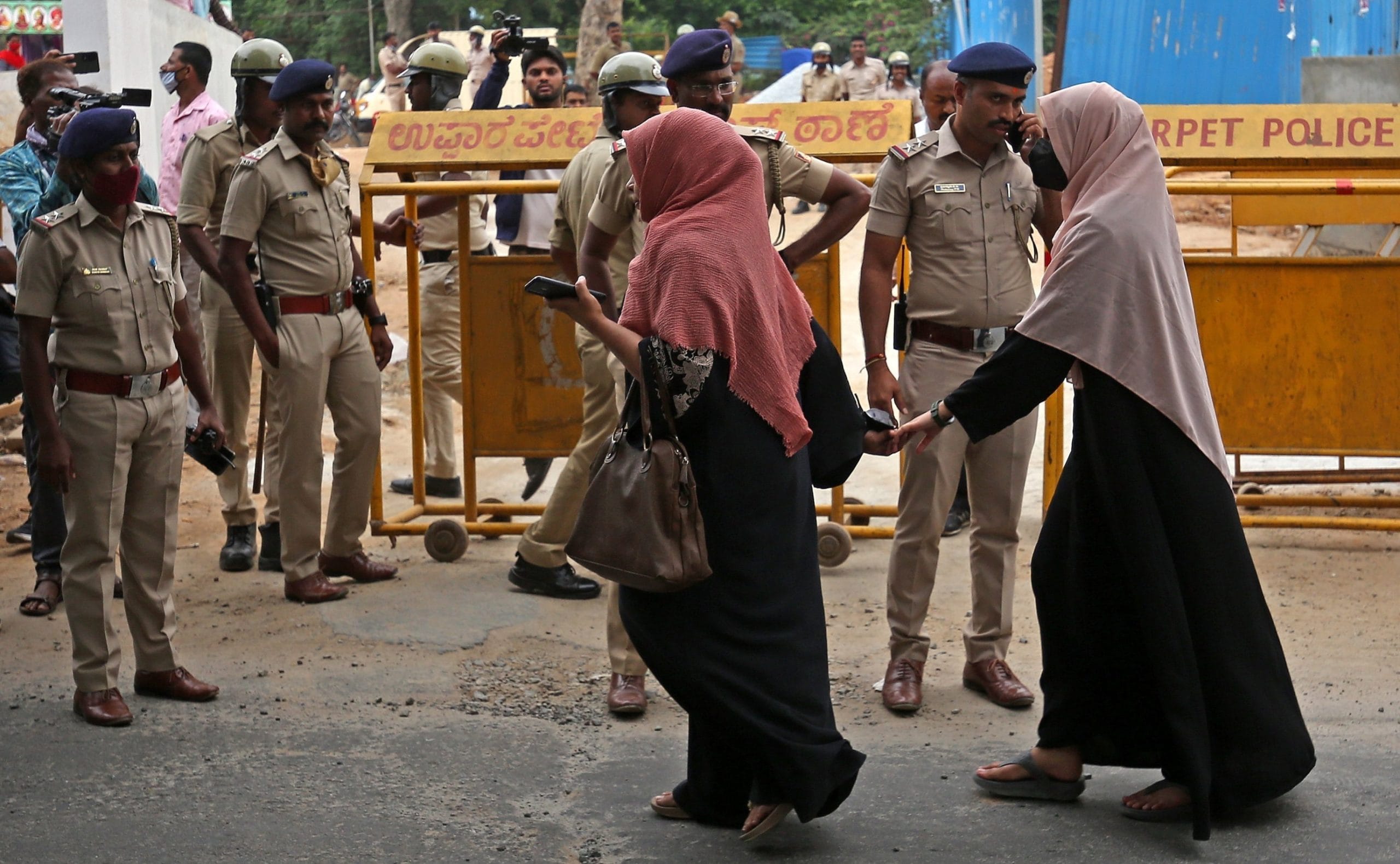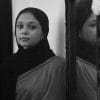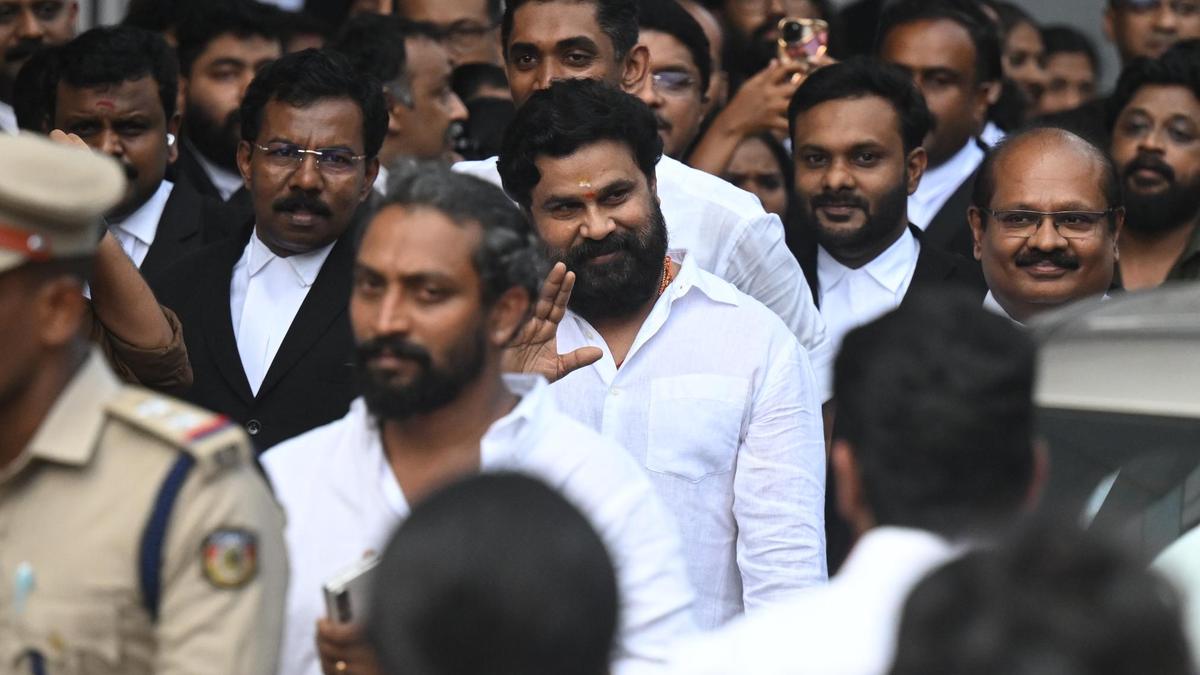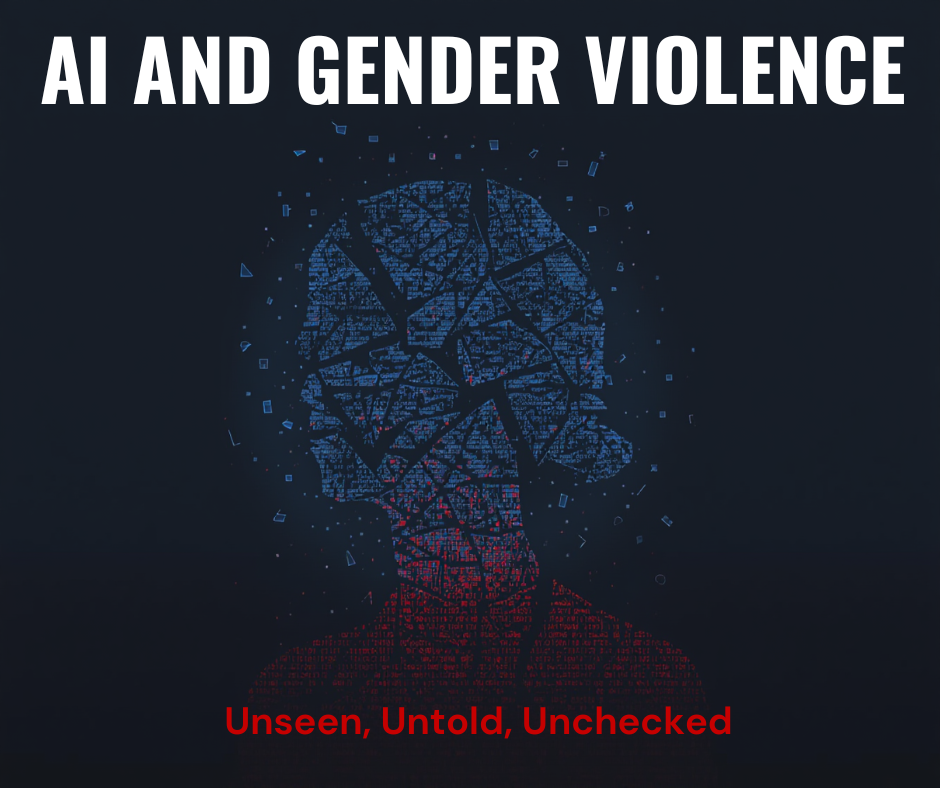Last year, on April 21, Prime Minister Narendra Modi gave a speech at an election rally organised in Banswara, Rajasthan, attacking the Indian National Congress. He stated that the manifesto of the Congress Party aimed at distributing the property of the citizens to the ‘infiltrators,’ who have ‘more number of children.’ This was a significant moment in the right-wing party’s public declaration of its anti-Muslim stance, along with cementing its electoral tactics of casting Muslims as the villains. This hate speech incident was a watershed moment, according to the recently released India Hate Lab Report by the Centre for the Study of Organised Hate (CSOH), which aims to “advance research and inform policies that combat hate, violence, extremism, radicalism and disinformation.”
According to the report, the number of hate speeches went from 668 in 2023 to 1165 in 2024, an increase of 74.4 percent. The report attributes this jump to two major incidents in last year’s political yearbook: the elections to the Lok Sabha and the state assemblies of Jharkhand and Maharashtra and the claims of anti-Hindu violence in the student uprising in Bangladesh.
32 percent of the total hate speeches were delivered during the period from March 16 to June 1, the peak of election campaigning, ironically when the Model Code of Conduct was in place. Another peak happened in August 2024, when the Sheikh Hasina regime fell at the hands of the student movement in Bangladesh. However, the majority of all these hate speeches, 98.5 percent of them, were directed at one community – Muslims. While 9.9 percent of speeches were targeted at Christians, Rohingya refugees and Bangladeshi migrants were attacked in 118 and 182 speeches, respectively.
Another revelation in the report suggests that unlike in 2023, when state-level politicians and regional leaders resorted to speeches of hate, it was the national-level politics that spewed the venom this year.
As to the question of who organised these events of hate speeches, the family Sangh Parivar runs first with 58.8 percent. Among them, the Bharatiya Janata Party held 29.2 percent—which means they organised 340 gatherings in the 1165 events where hate speeches were delivered. However, there are two points of interest here—the figure of 340 in 2024 has increased from a figure of 50 in 2023, an increase of 580 percent this year. Secondly, among the 340 events, 261 were organised during the general elections. This shows how aggressively the BJP has directed hate towards the minorities as an electoral tool.
Along with this, the Banswara incident had made it evident that the tool of divisive politics was not limited to the seers and saints associated with Hindutva; the bearers of the higher echelons were no different. Another revelation in the report suggests that unlike in 2023, when state-level politicians and regional leaders resorted to speeches of hate, it was the national-level politics that spewed the venom this year.
The report shows that Yogi Adityanath, the current Chief Minister of Uttar Pradesh and Narendra Modi, the current Prime Minister of the country, two main faces of Hindutva politics in India were the front runners for the ranking of political figures who have delivered the highest number of hate speeches. While Adityanath claimed the title with 86 hate speeches, Modi fell short at 67 and Amit Shah at 58. BJP also claimed the title for the party with the highest number of politicians delivering hate speeches—while politicians delivered 462 hate speeches, 452 came from the Bharatiya Janata Party.
Elections and hate speech
Coming back to the hate speech delivered by the Prime Minister in Banswara, the report finds that there were significant differences in the occurrence of hate speeches before and after this particular event. Before the speech, there were a total of 61 hate speech events that happened in the country during the election season, which is from March 16 to April 21. However, after the incident, the graph rose to 312 incidents during the latter part of the election season – from April 22 and June 1.
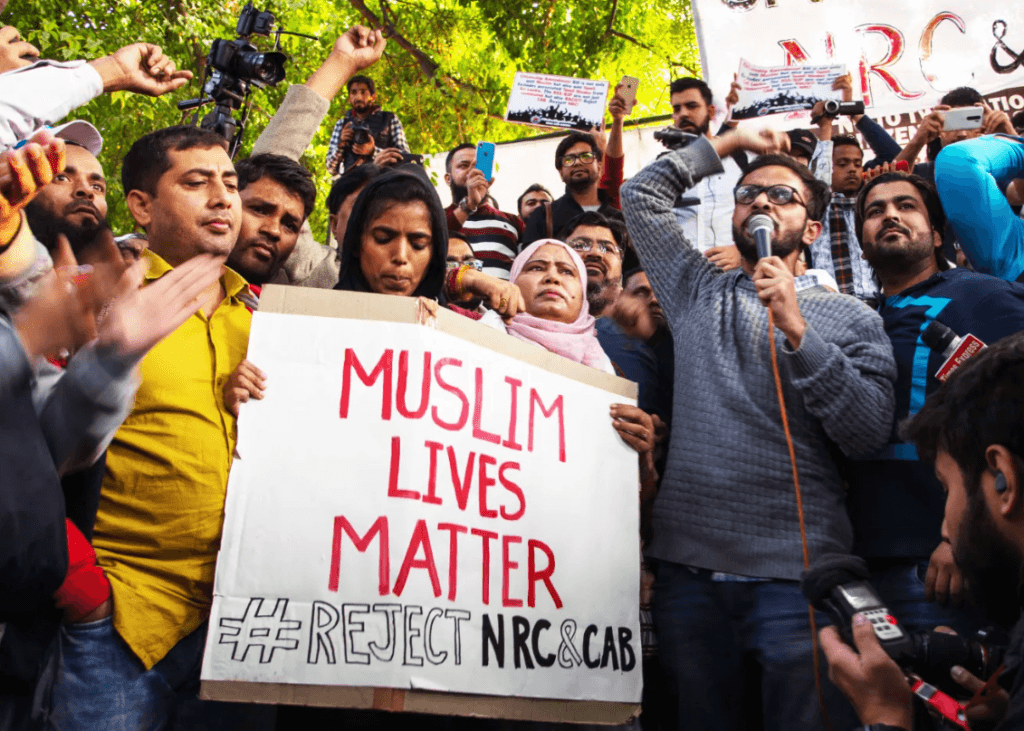
The speech delivered by the Prime Minister thus had two major effects – he cemented hate speeches against Muslims as a legitimate election tool. The other one, he promised impunity to the politicians who had been and will be blasting hatred against the minorities in India, a free pass on divisive strategies. Modi’s speech provided impetus and boost to several other incidents in last year’s election unfoldings – in May 2024, BJP Karnataka chief BY Vijayendra shared an animated video where the Congress President Rahul Gandhi is feeding an egg with ‘Muslims,’ written on it and depriving others. This was the rhetoric spearheaded by the BJP accusing the Congress of Muslim appeasement at the expense of other minorities.
One of the key competitors of delivering hate speeches against Muslims in India is Nitesh Rane – the former MLA from Maharashtra and now a cabinet Minister in the BJP-led Maharashtrian state government.
According to a report by Article 14, Rane was quoted calling Muslims “Pakistani pimps,” along with threatening to strip them naked and kill them at their own homes. On the same day, he also said that if the police would allow 30 minutes, the “bhagwa-dhaaris” (saffron wearers) would clean “Pathanwadi (of Muslims).” In September last year, he threatened to “enter the mosque and beat them up” if anything is acted against Ramgiri Maharaj, the Hindu seer who was booked for derogatory remarks against Prophet Muhammed.
These kinds of speeches fall under the category of “dangerous speeches” which the report describes as speech that “increases the risk that its audience will condone or participate in violence against members of another group.” The report states that almost 22.2 percent of the hate speeches delivered last year were direct calls for arms, the destruction of Muslim properties and the demolition of Muslim religious structures.
Another major figure who fits into this category of “dangerous speech” is the BJP legislator from Goshamahal, T Raja Singh. He is ranked fifth among the political leaders who have delivered the highest number of hate speeches. In February 2024 despite the court warnings, he delivered a speech to a crowd in Mira Road, asking them to fight against ‘love jihad and cow slaughter.’ Mira Road in Mumbai had witnessed communal violence following the inauguration of the Ram Temple in Ayodhya.
On April 17 2024 during Shobha Yatra, a procession marked in the celebration of the birth of Ram, he promised that they would reclaim “Kashi, Mathura and 40,000 other Hindu temples,” adding that kar sevaks would be trained to do the same.
Amidst the rising tensions in Bangladesh and the subsequent incidents in India against minorities and Rohingyas, Raja Singh tore down a Bangladesh flag at an event in Goa. Addressing the event organised by the Vishwa Hindu Parishad and Bajrang Dal, he expressed concerns over the “increasing of the Muslim population” in the state.
Himanta Biswas Sarma, the current Chief Minister of Assam is another name in the list. During the campaign for the assembly elections in Jharkhand, Himanta Biswas Sharma remarked that the Hemant Soren-led Jharkhand Mukti Morcha government invites “infiltrators,” and that Muslims voted for a single party and the Hindu votes are getting divided. The BJP had also released an election video, depicting skull-cap-wearing people invading a home, metaphorically showing how Muslims have been infiltrating Hindu properties. All these narratives could be drawn to the speech Modi made in Banswara.
Himanta Biswas Sarma is also one of the whistleblowers of the alleged “love jihad” and “land jihad.” According to the report, the themes of “jihad” are mentioned in 581 hate speech incidents, forming almost half of the total hate speeches delivered in the country in the past year. The rhetoric of Muslims as infiltrators, especially the Bangladeshi migrants and the Rohingya refugees has increased. One of the startling revelations of the study is the increase in hate speeches against Bangladeshi migrants and Rohingya refugees – a whopping jump of 210 percent.
Sarma, in his public speeches, continuously alleges ‘miyas,’ Bengali speaking-Muslims of invading Assam. Another loyal proponent of the land jihad calling is Uttarakhand Chief Minister Pushkar Singh Dhami, who announced in October of last year that “land jihad and thook (spit) jihad” will not be allowed in ‘Devbhoomi,’ Uttarakhand.”
Regional distribution of hate speeches
While 79.9 percent of the speeches took place in states ruled by the Bharatiya Janata Party, two states were notable for the dramatic increase in the occurrence of hate speech incidents. One of them is Himachal Pradesh – while it was among 13 hate speech events taking place in 2023, it rose to 48 in 2024. This Congress-ruled state saw anti-minority rallies demanding the demolition of the Sanjauli mosque in Shimla. The state which has a composition of 2.18 percent Muslims saw campaigns even by the state government against Muslims – in September 2024, the Minister for Public Works and Urban Development, Vikramaditya Singh mandated that shops must display the names of the owners.
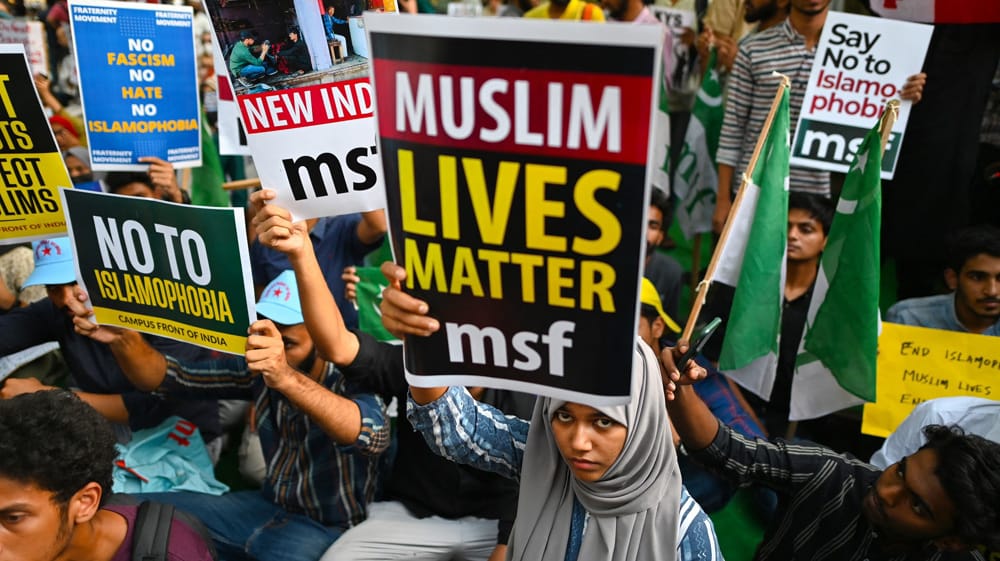
Another state is the BJP-ruled Uttarakhand which saw an increase of 58.5 percent from last year. After the campaign to drive out Muslims from Purola in 2023, the state witnessed incidents of calls for the demolition of mosques and an economic boycott of Muslims in Chamoli. The state saw violence erupting after a mosque and madrassa were demolished in Haldwani in February 2024 and there were calls for the destruction of another mosque in October.
Influence of social media
The report also highlights the influence of social media in “enabling, amplifying and mainstreaming hate speech and extremist ideologies.” Raqib Hameed Naik, the Executive Director of CSOH while speaking to TRT World, also raised the point of how Big Techs are amplifying hate speeches in India. He said that these companies are negligent in removing the content which carries elements of hate. According to the report, among the 1165 instances, 995 videos had their sources on the social media platforms. Along with this, 266 hate speeches by senior BJP leaders were live-streamed through various social media platforms.
About the author(s)
Hajara Najeeb is an Independent Researcher working on issues of Minority Rights and Affairs, Gender, and Politics.
